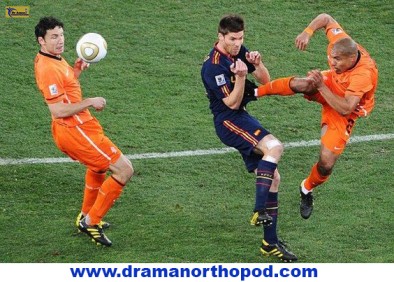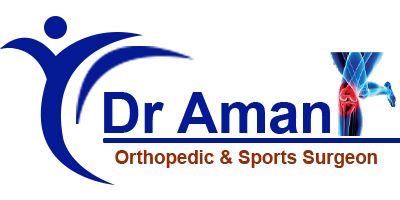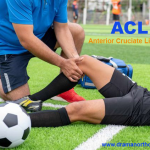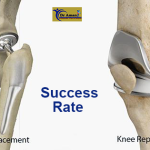Introduction :
Sports injuries are an inherent risk of physical activity, affecting individuals of all ages and fitness levels. Whether you’re a professional athlete, a weekend warrior, or someone who enjoys recreational sports, understanding these injuries, their treatment, and prevention strategies is crucial for maintaining physical health and well-being.

Types of Sports Injuries
1.ACL (Anterior Cruciate Ligament) Injury:
The ACL is one of the major ligaments in the knee that provides stability. An ACL injury typically occurs due to sudden stops or changes in direction, often seen in sports like soccer, basketball, and football. Symptoms include a popping sensation in the knee, swelling, and instability.
2.PCL (Posterior Cruciate Ligament) Injury:
The PCL is another ligament in the knee that helps stabilize the joint. PCL injuries are less common than ACL injuries but can occur due to direct impact to the front of the knee or from a twisting motion. Symptoms include pain, swelling, and difficulty walking or bearing weight on the knee.
3.MCL (Medial Collateral Ligament) Injury:
The MCL is located on the inner side of the knee and helps stabilize the joint. MCL injuries often result from a blow to the outer side of the knee or from twisting motions. Symptoms include pain, swelling, and instability in the knee, especially when attempting to change direction.
4.Meniscus Tear:
The meniscus is a cartilage structure in the knee that acts as a shock absorber and provides stability. A meniscus tear can occur due to sudden twisting or direct impact to the knee, common in sports that involve pivoting and sudden changes in direction. Symptoms include pain, swelling, stiffness, and a clicking or locking sensation in the knee.
5.Shoulder Dislocation:
Shoulder dislocation occurs when the upper arm bone (humerus) pops out of the shoulder socket (glenoid). This injury often happens during sports that involve overhead movements or direct impact to the shoulder, such as volleyball, basketball, and rugby. Symptoms include severe pain, swelling, and inability to move the shoulder joint.
6.Sprains:
Sprains involve the stretching or tearing of ligaments, which connect bones to each other in joints. Ligament sprains can occur in various parts of the body, including the ankle, knee, and wrist. Symptoms include pain, swelling, bruising, and instability in the affected joint.
7.Strains:
Strains occur when muscles or tendons are overstretched or torn, commonly seen in sports that involve explosive movements or sudden changes in direction. Symptoms include pain, muscle weakness, swelling, and difficulty moving the affected muscle or joint.
8.Fractures:
Fractures, or broken bones, can occur due to sudden impact, excessive force, or repetitive stress on the bone. Fractures can affect any bone in the body and are common in sports like football, hockey, and skiing. Symptoms include pain, swelling, deformity, and inability to bear weight on the injured limb.
9.Achilles Tendon Rupture:
The Achilles tendon is a strong band of tissue that connects the calf muscles to the heel bone. Achilles tendon ruptures can occur during sports that involve pushing off or sudden acceleration, such as basketball and tennis. Symptoms include a sudden sharp pain in the back of the ankle, swelling, and difficulty walking or standing on tiptoe.
10.Rotator Cuff Injury:
The rotator cuff is a group of muscles and tendons that stabilize the shoulder joint and facilitate arm movements. Rotator cuff injuries can occur due to repetitive overhead movements or traumatic events, common in sports like baseball, swimming, and tennis. Symptoms include pain, weakness, and limited range of motion in the shoulder joint.
Sports injuries encompass a wide range of conditions, each with its own set of symptoms and complications:
Understanding these types of sports injuries is essential for prevention, early intervention, and appropriate treatment to minimize long-term complications and facilitate recovery.
Sports Injuries Statistics
Statistics shed light on the prevalence and impact of sports injuries:
- Over 3.5 million children and teens experience sports-related injuries each year.
- Contact sports account for more injuries than non-contact sports.
- Males aged 5 to 24 make up the majority of sports injury episodes.
- Lower body injuries are the most common, followed by upper extremities and head/neck injuries.
Risks and Diagnosis
Understanding risk factors and seeking timely diagnosis are crucial:
- Children, older adults, and those with previous injuries are at higher risk for sports injuries.
- Prompt diagnosis through physical examination and imaging tests facilitates appropriate treatment and recovery.
Frequently Asked Questions (FAQs)
. When should I seek medical attention for a sports injury?
- Seek medical attention if you experience severe pain, swelling, deformity, or inability to bear weight on the injured area.
2. How can I prevent sports injuries in children?
- Encourage children to warm up properly, use appropriate safety gear, and avoid overexertion in sports activities.
3. What are the long-term consequences of untreated sports injuries?
- Untreated sports injuries can lead to chronic pain, limited mobility, and increased risk of future injuries.
4. Are there specific exercises to prevent sports injuries?
- Exercises focusing on flexibility, strength, and balance can help reduce the risk of sports injuries.
In conclusion, awareness, preparation, and proactive measures are essential for preventing and managing sports injuries. By prioritizing safety and adopting healthy exercise habits, individuals can enjoy the benefits of physical activity while minimizing the risk of injury.
Explore common sports injuries like ACL tears, shoulder dislocations, and fractures. Learn symptoms, causes, and treatments for effective recovery. For personalized advice and treatment options, consult with us at www.dramanorthopod.com to schedule an appointment. Orthopedic and Sports surgeon is the choose for the treatment of sports injuries.Take proactive steps to safeguard your well-being and enhance your athletic journey.





